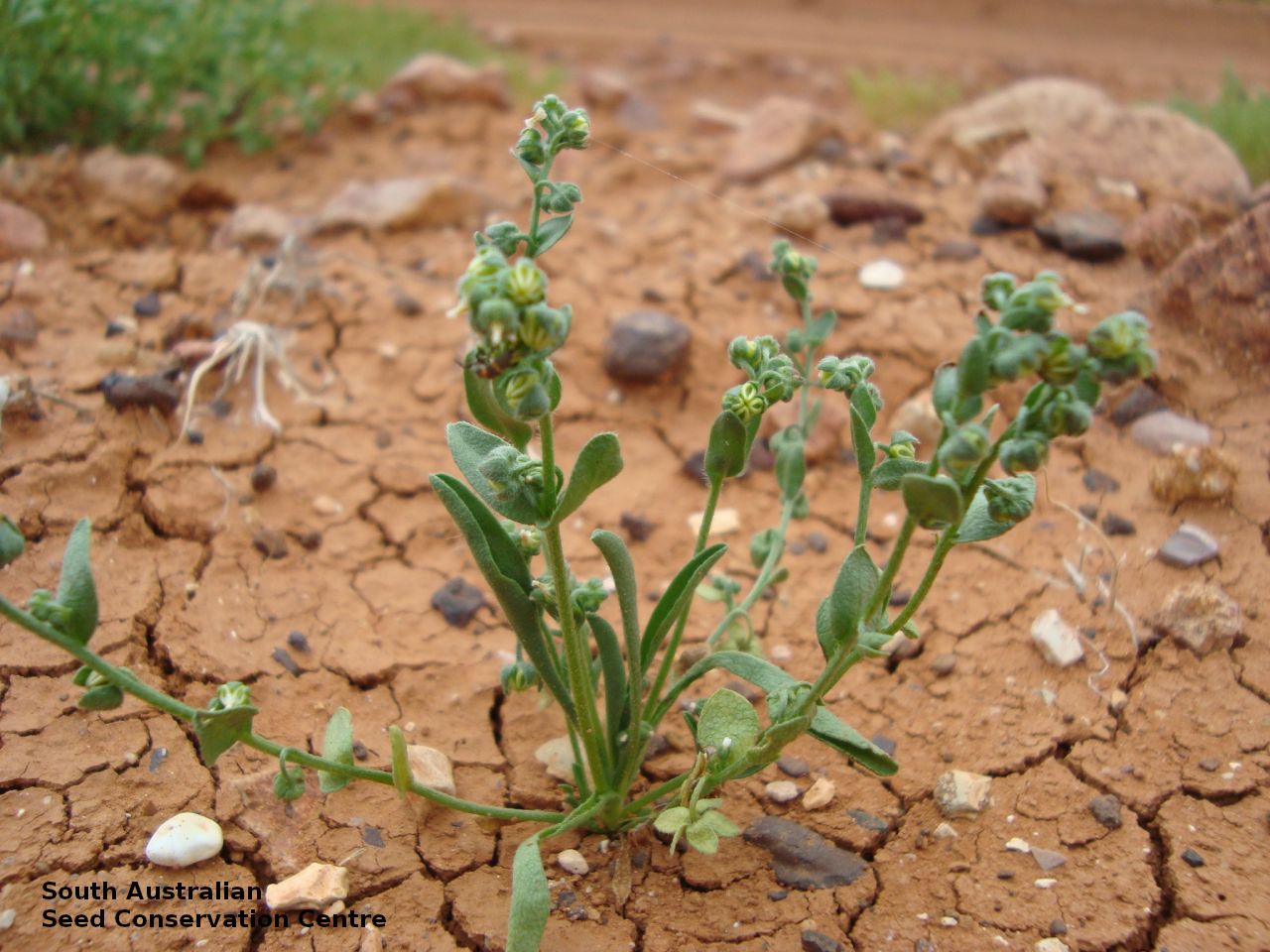
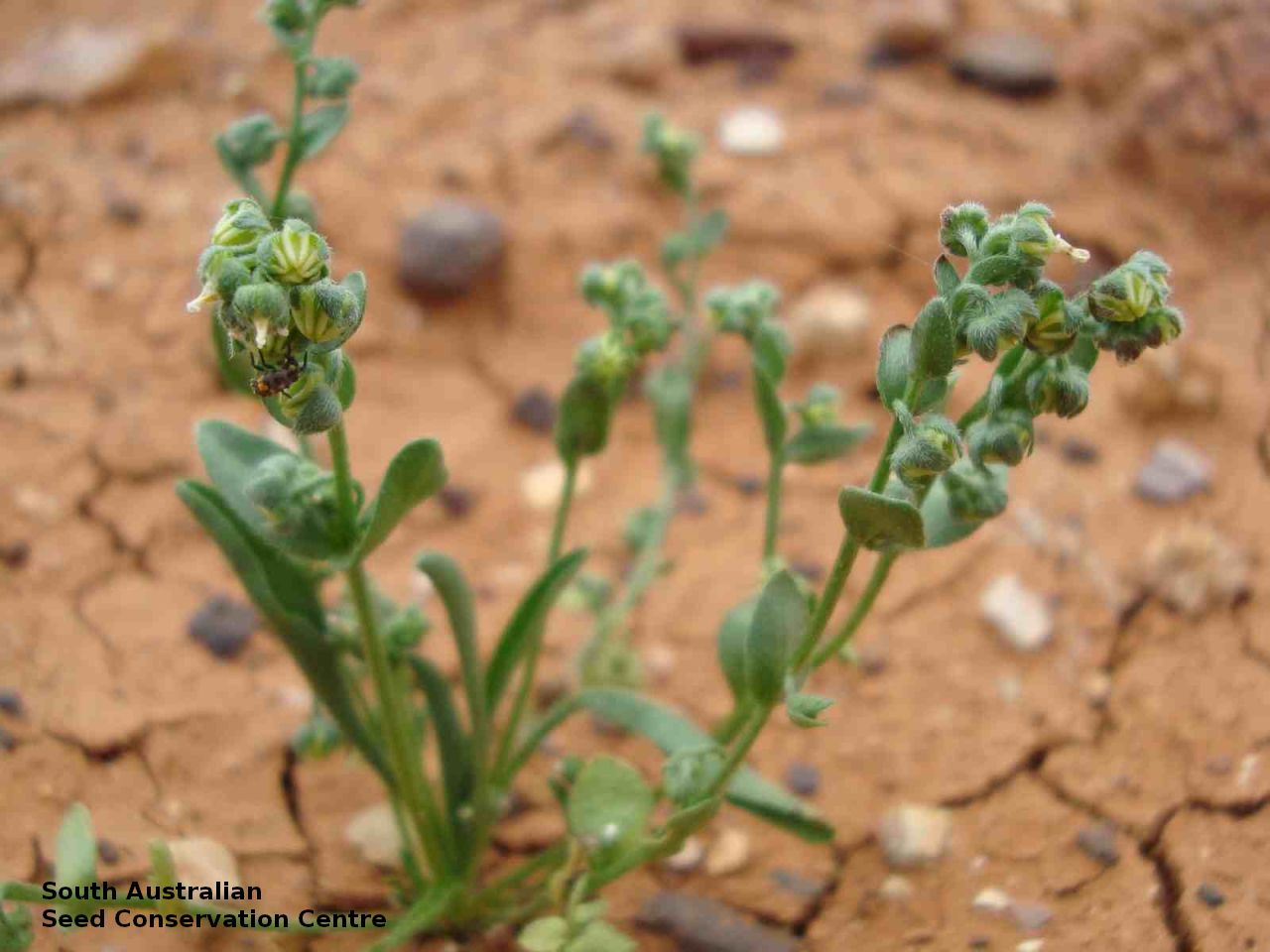
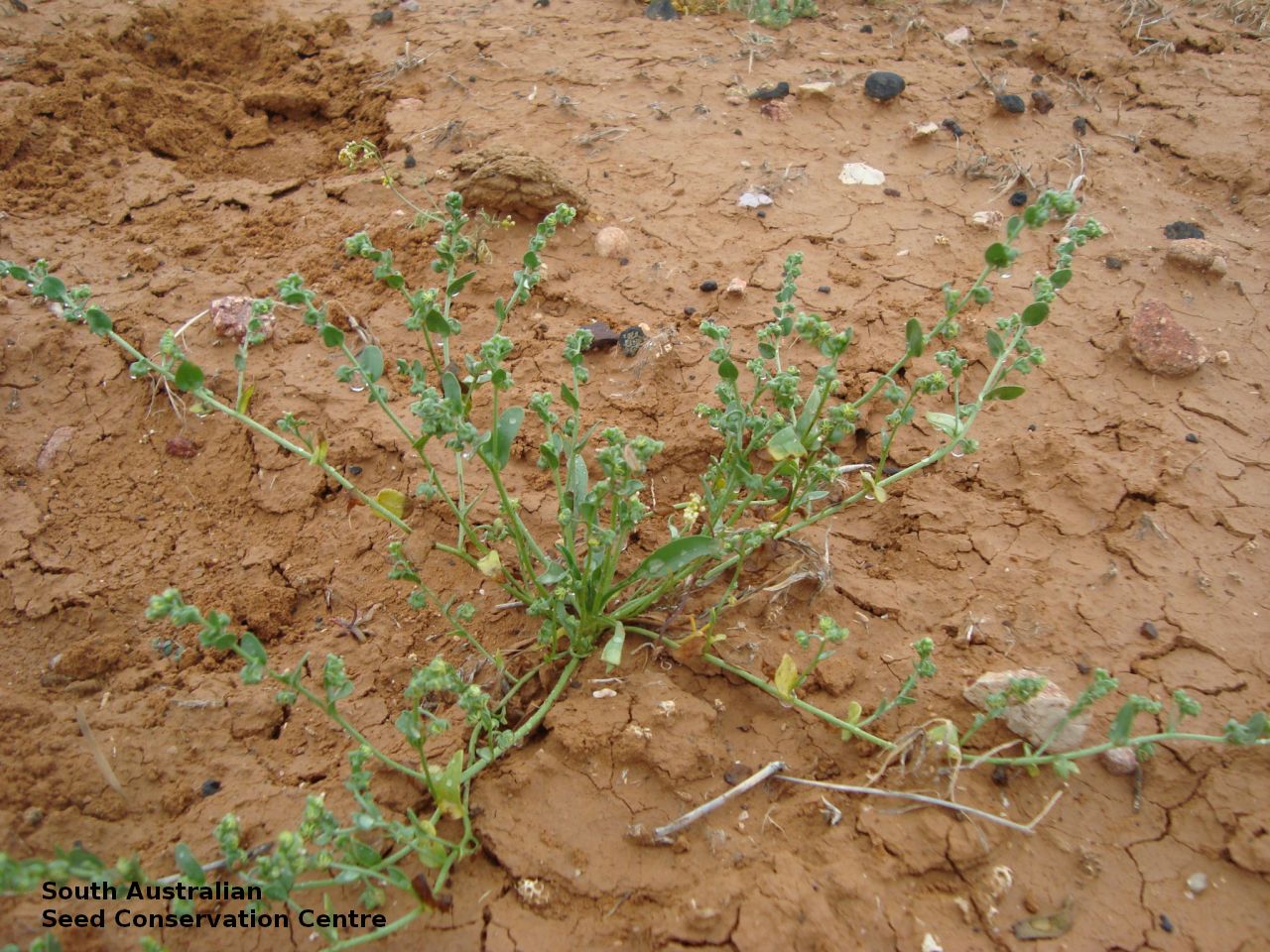

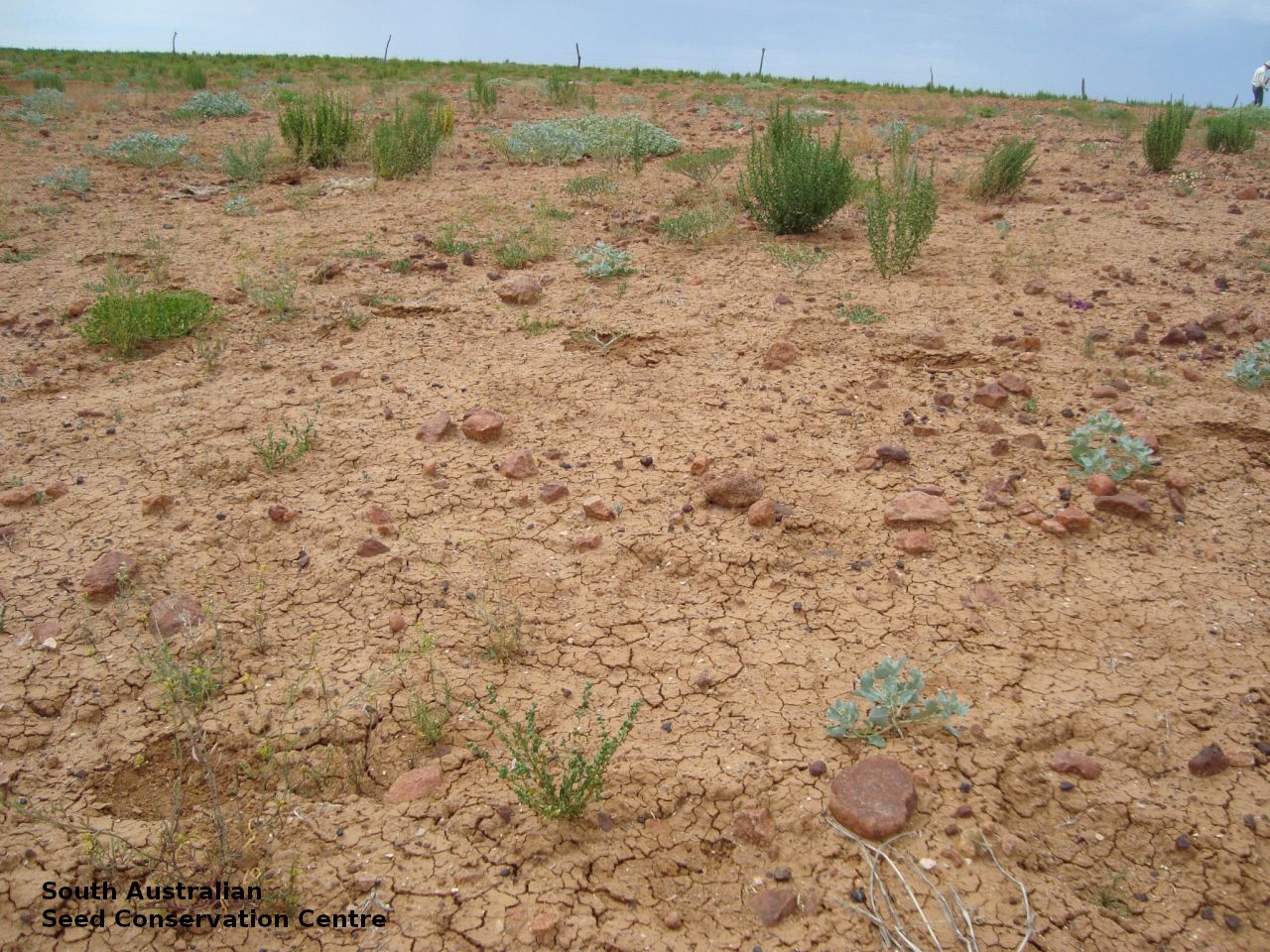
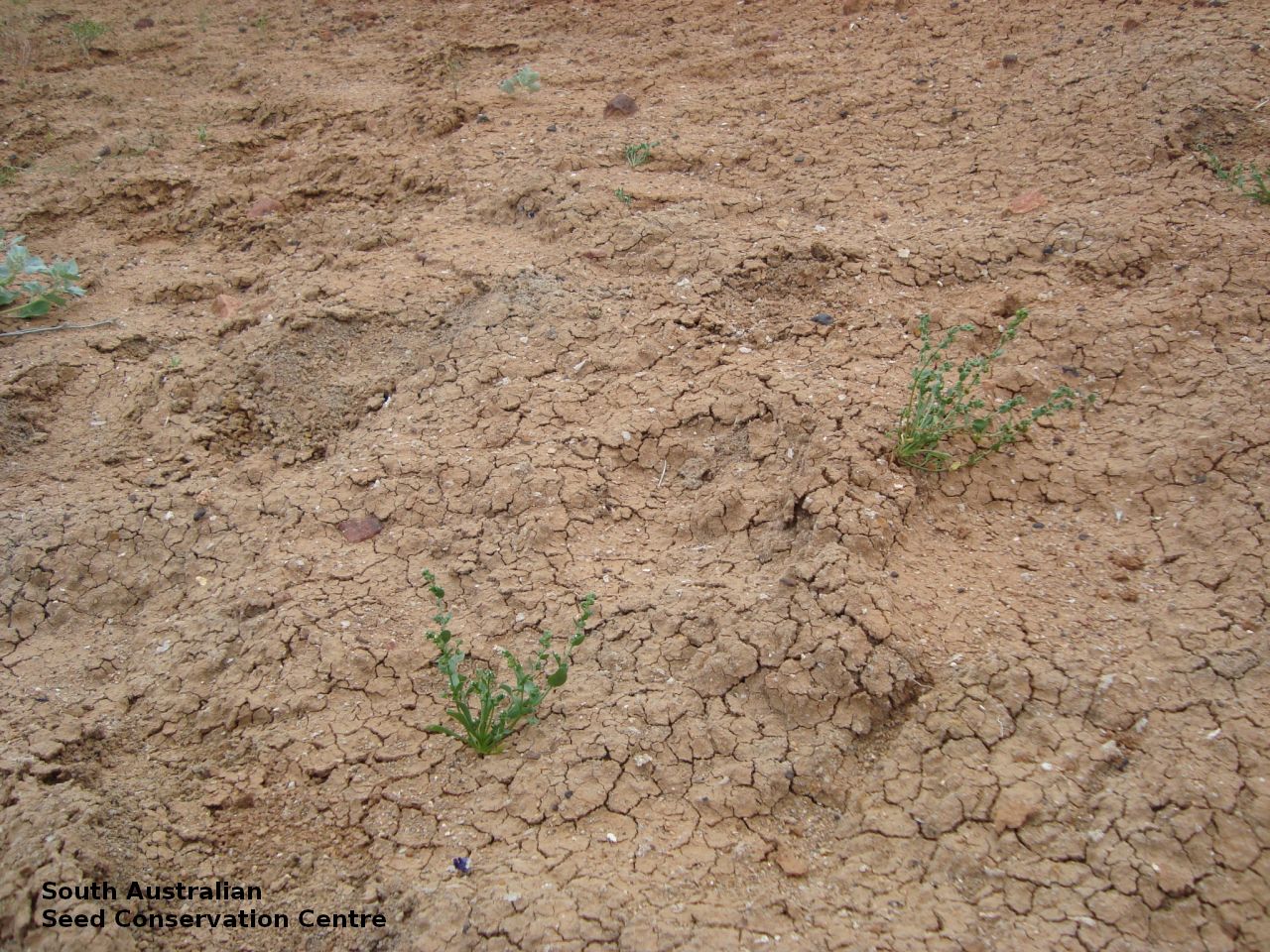
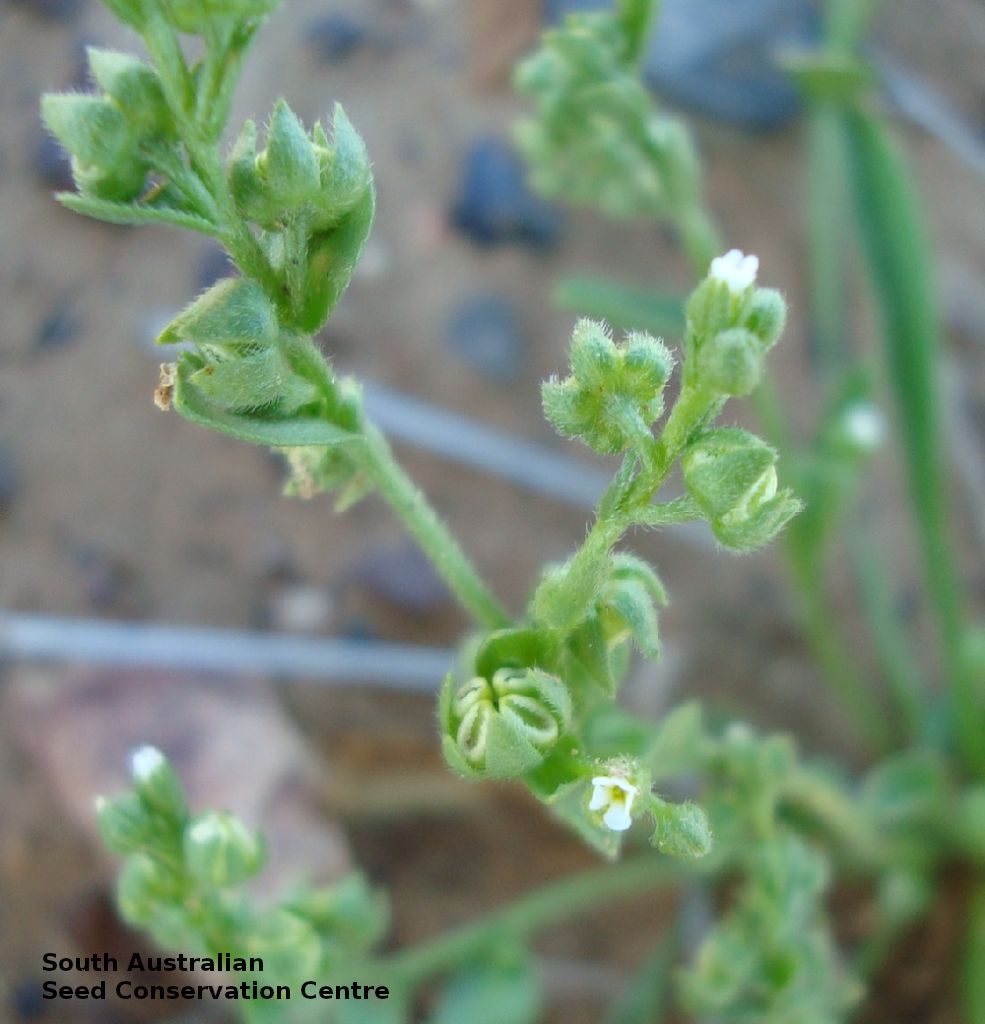
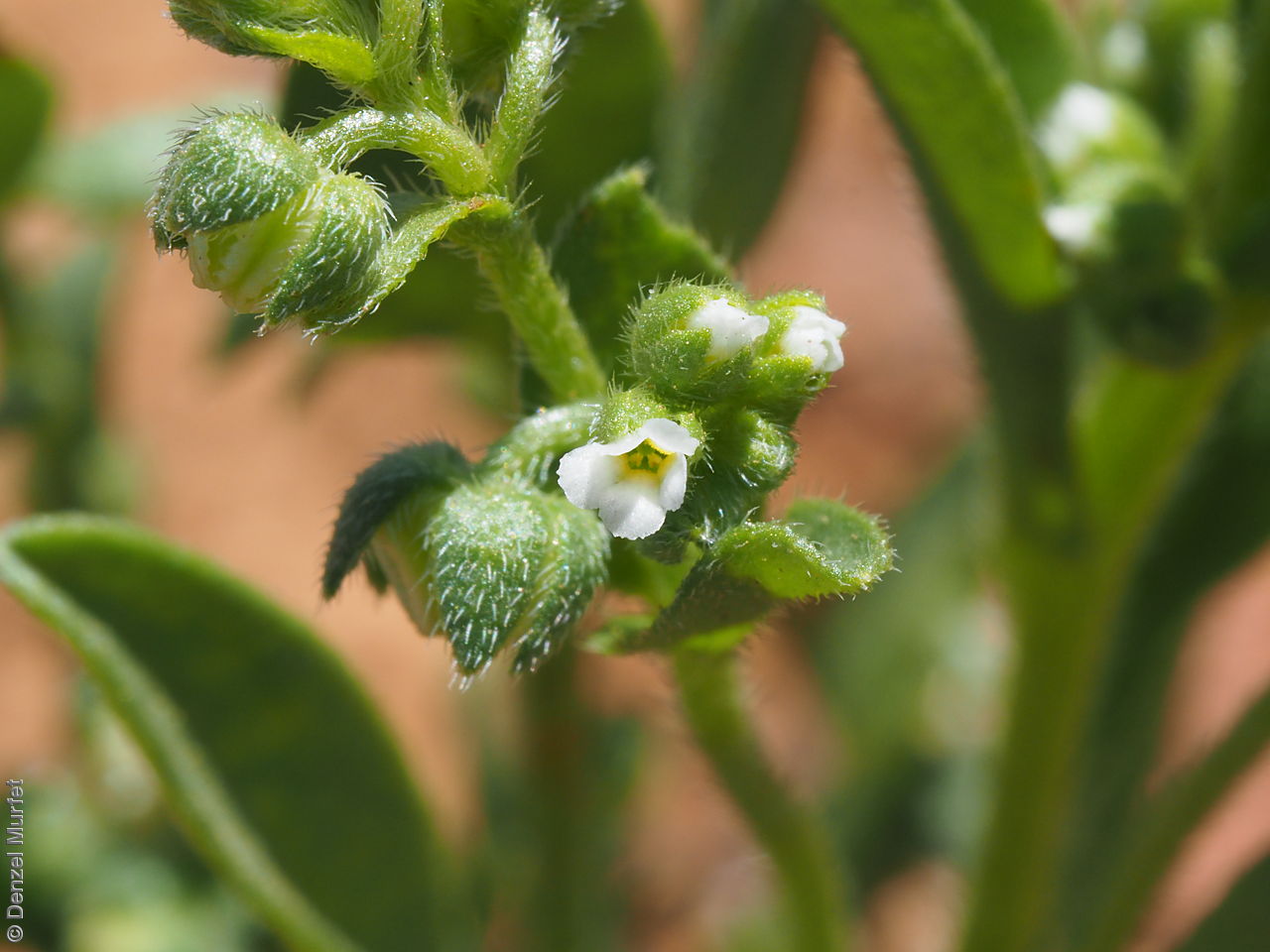
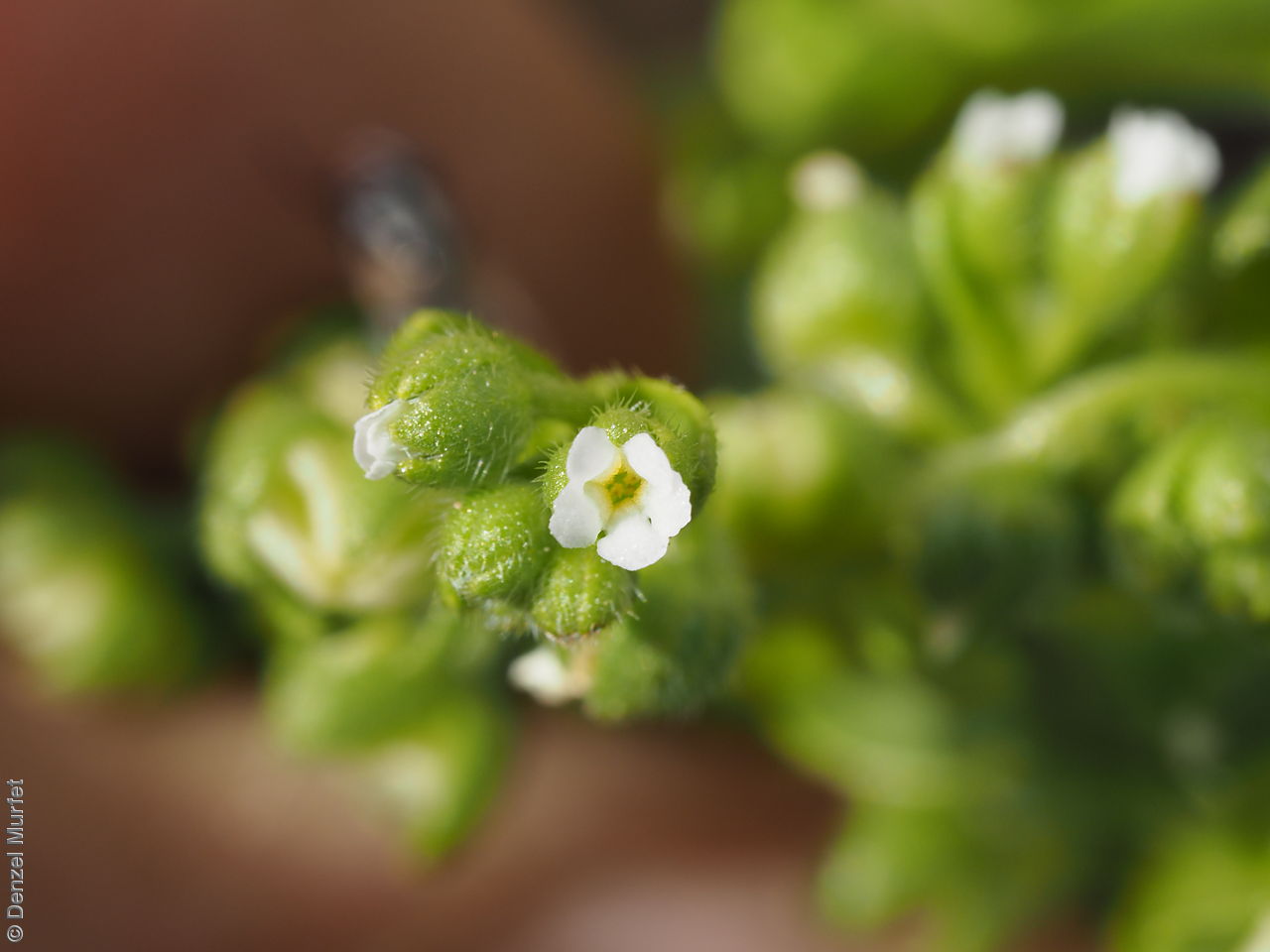
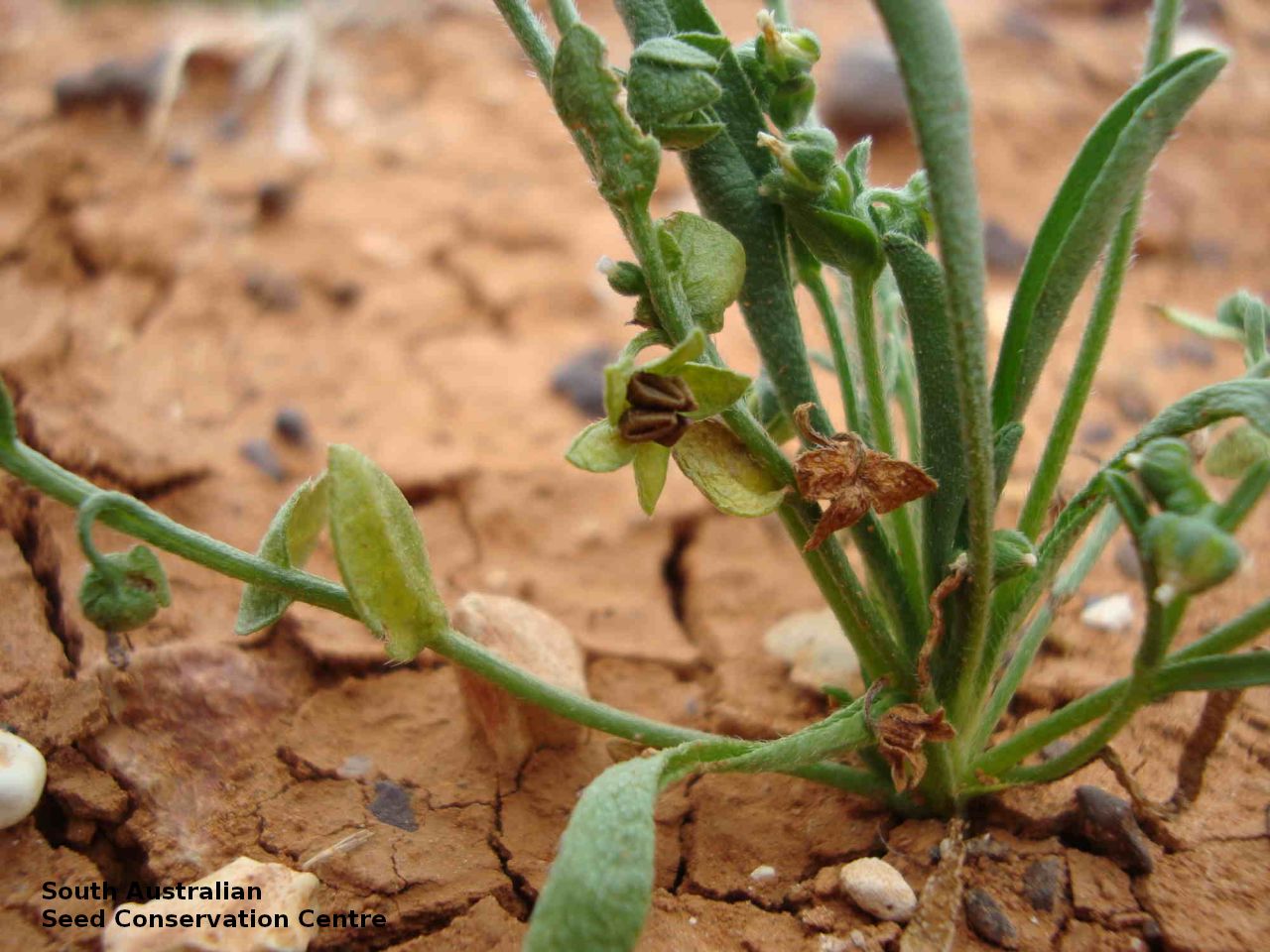
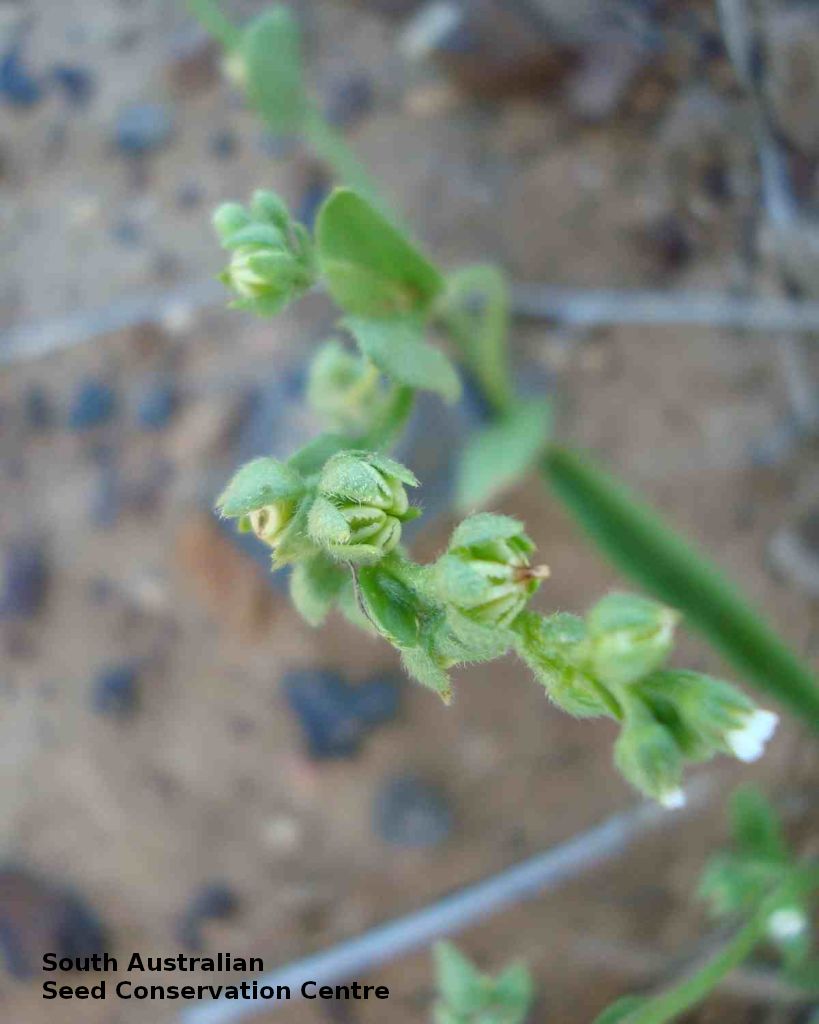
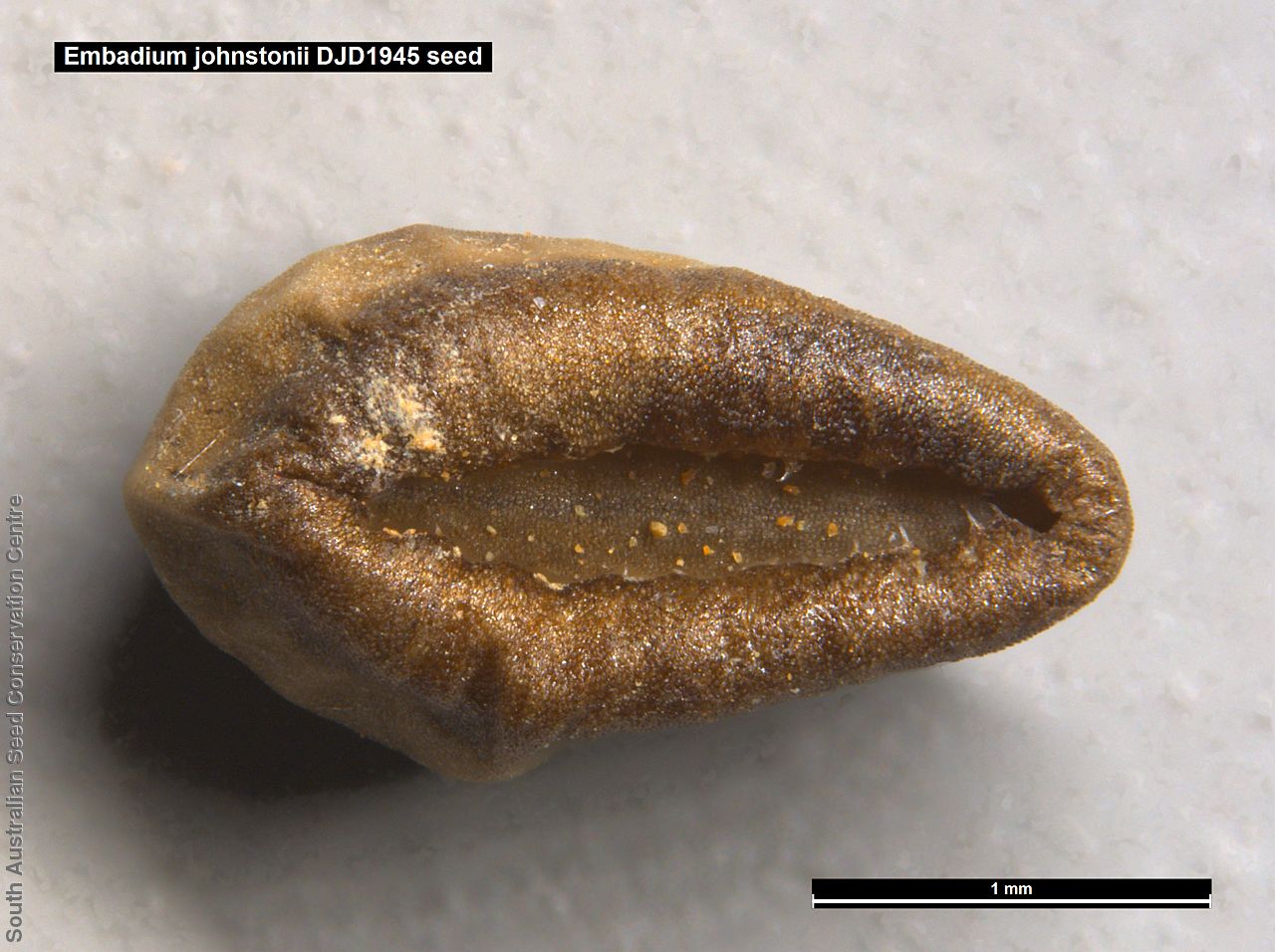
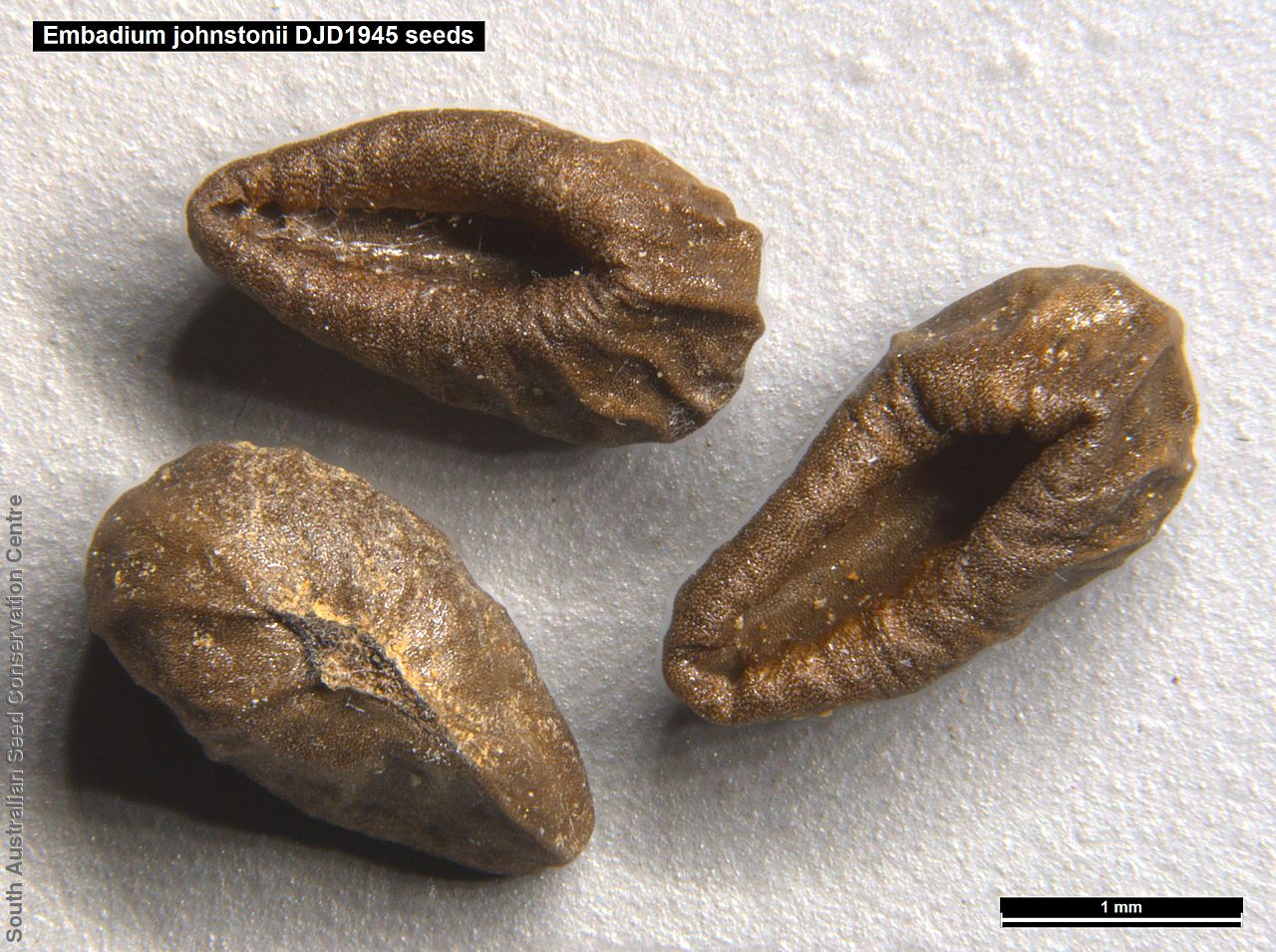
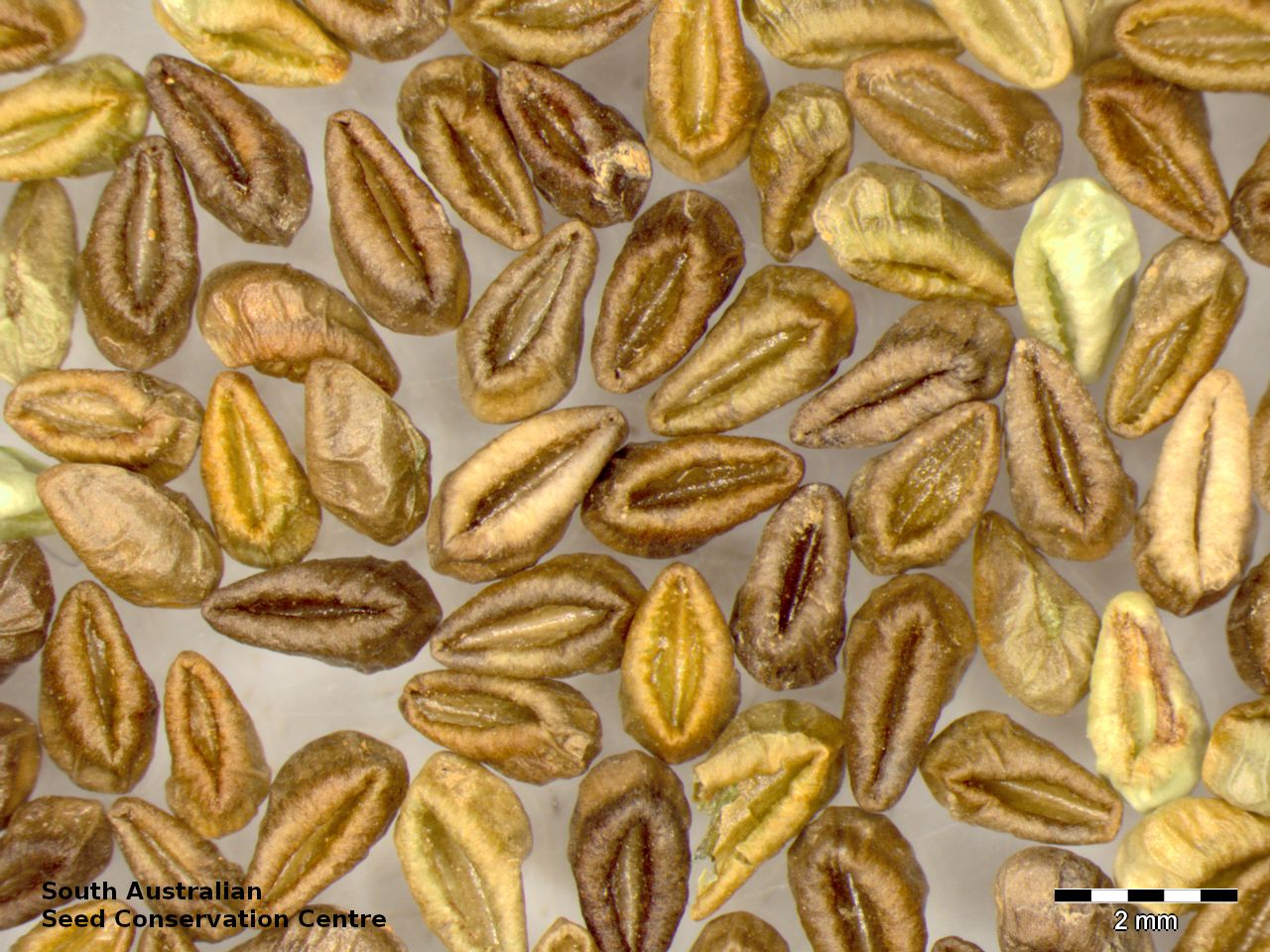
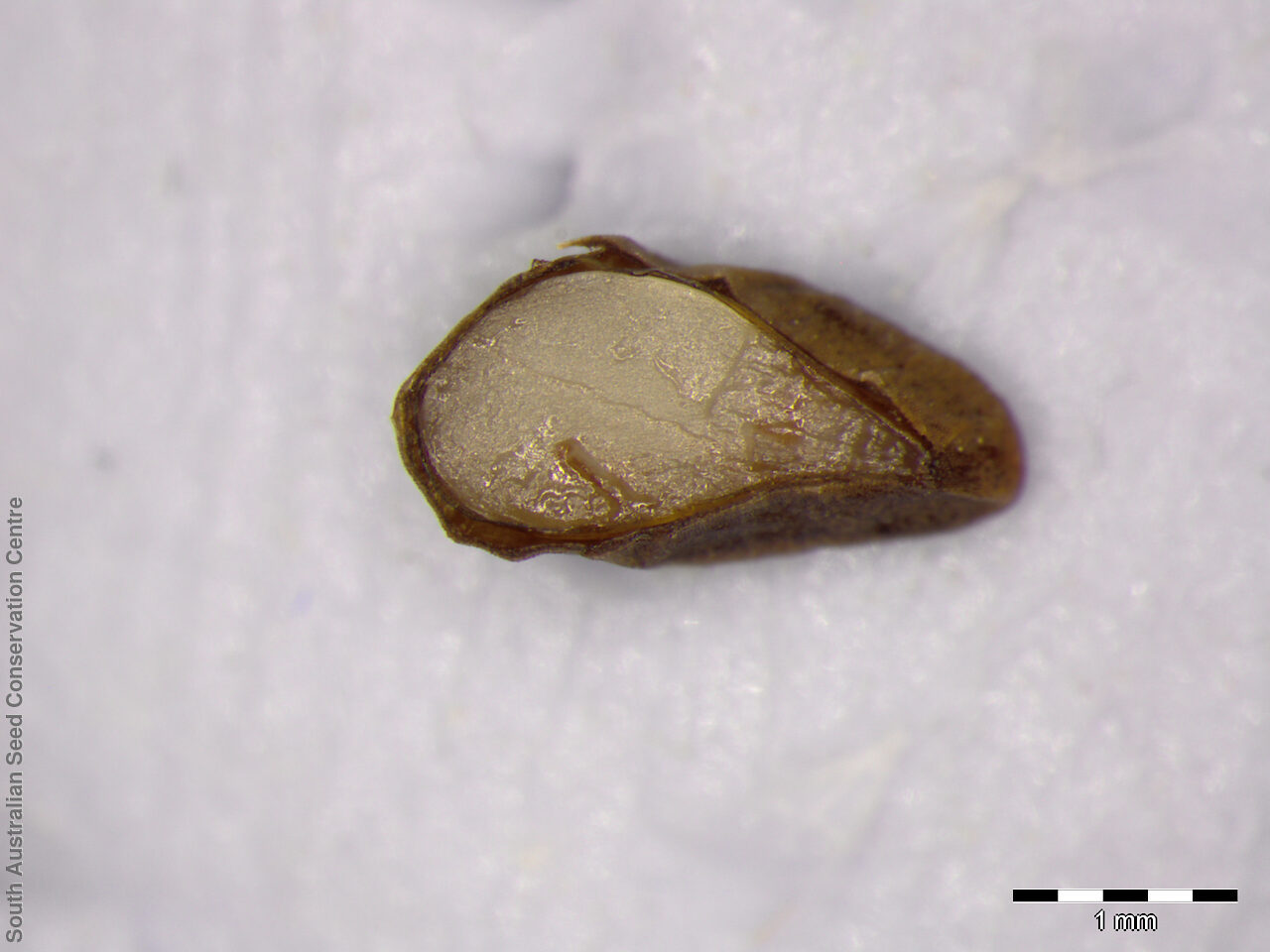
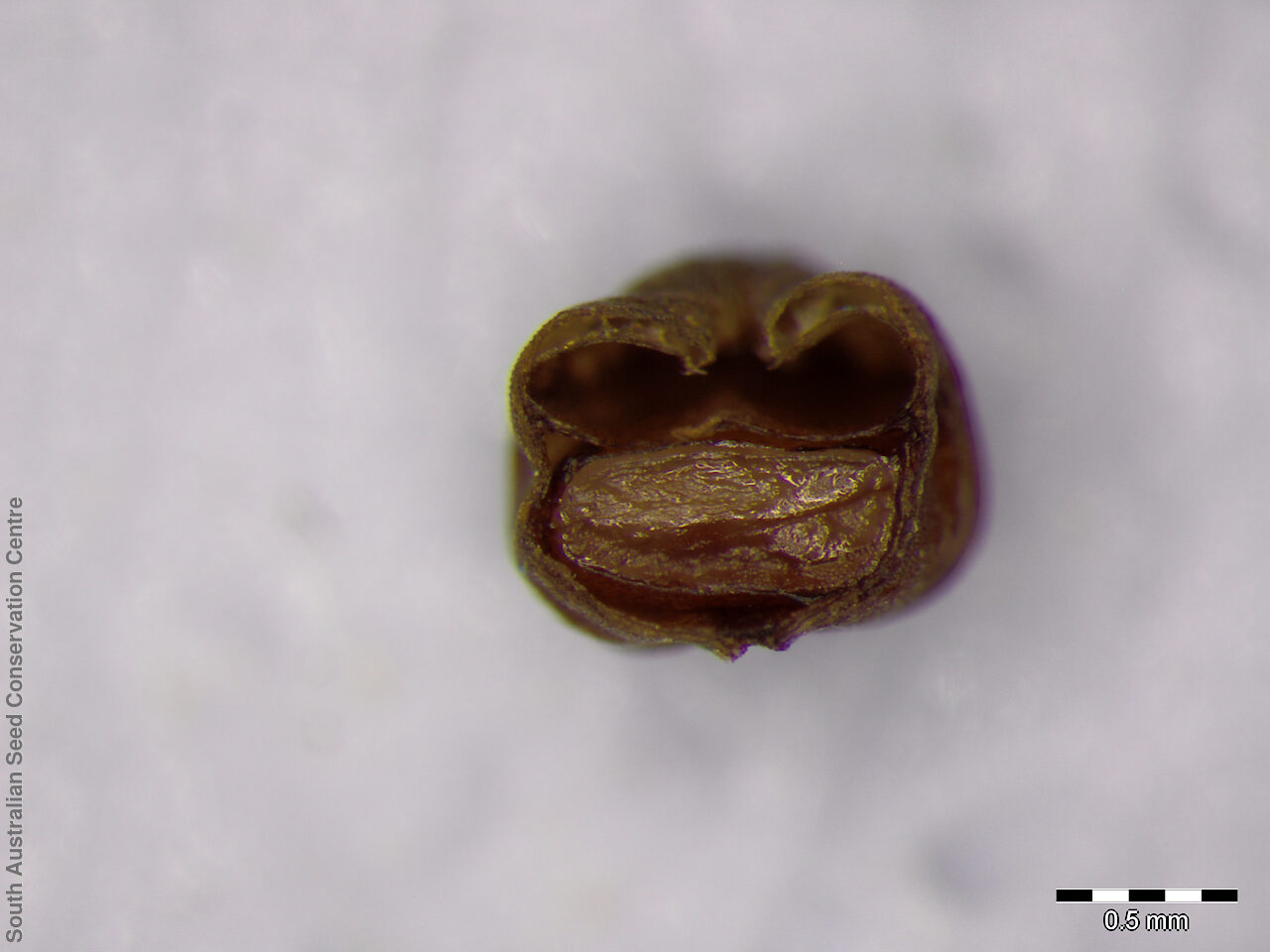

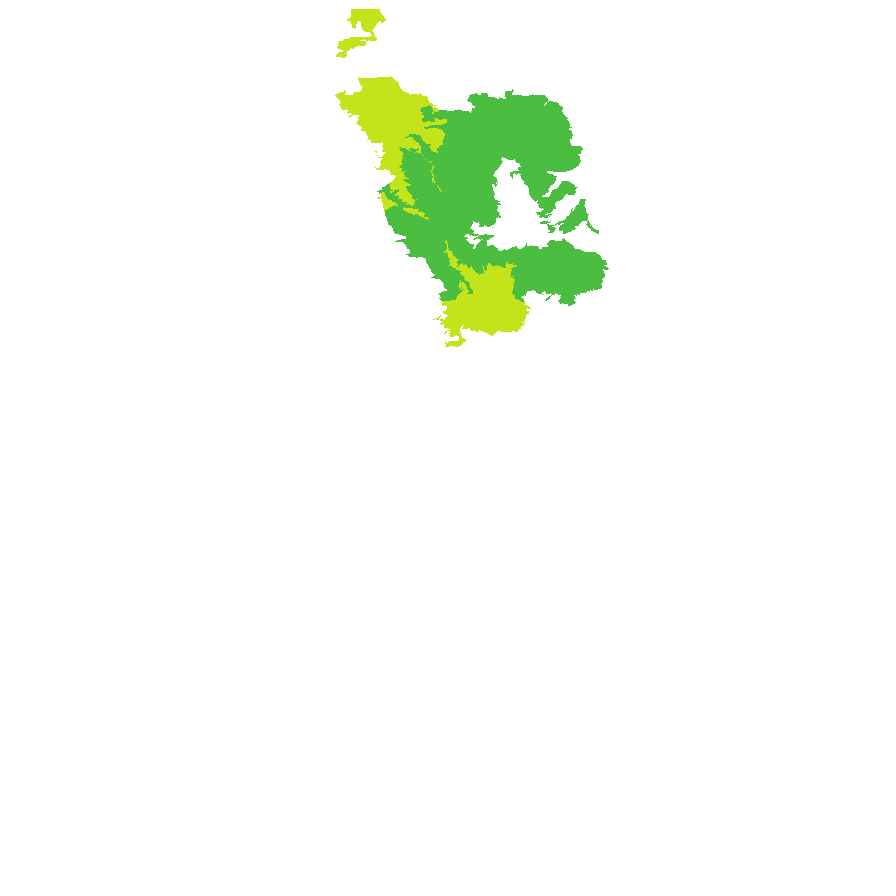
Common names
Johnston's Slipper-plant
Johnston's Embadium
Etymology
Embadium from the Greek 'embadion' meaning a little slipper; referring to the mericarps bearing some resemblance to a slipper. Johnstonii named after Ivan Murray Johnston (1898�1960), a United States botanist and a specialist in Boraginaceae.
Distribution and status
Endemic to South Australia and found in e central South Australia, mainly between Cooper Pedy and Oodnadatta growing on gypseous soils. Native. Rare in South Australia.
Herbarium region: Lake Eyre
NRM region: South Australian Arid Lands
AVH map: SA distribution map (external link)
Plant description
Annual herb with few to many, more or less erect branches to 20 cm long, mainly from the base, with a tap root, covered with hairs. Leaves alternate, narrowly oblanceolate-spatulate, sub-petiolate but slightly sheathing in the basal rosette, becoming widely spaced, sessile, oblanceolate-elliptic to lanceolate higher up; to 4 cm long and 0.5 cm wide. Flower-spike terminal with tubular white flowers along the stems. Flowering between September and October. Fruits are dark brown cluster with four seeds. Seeds are pale yellowish-brown ovoid seed to 3 mm long and 1.5 mm wide, with a raised spongy rim with margins incurved. Seed embryo type is spatulate fully developed.
Seed collection and propagation
Collect seeds between September and November. Collect mature fruits that are dark, hard and come off easily. Can collect indivual fruit cluster or break off whole heads. Place the fruits in a tray and leave to dry for one to two weeks. Then rub the fruits gently by hand to dislodge the seeds. Use a sieve to separate the unwanted material. Store the seeds with a desiccant such as dried silica beads or dry rice, in an air tight container in a cool and dry place. From two collections, the seed viability was average to high, ranging from 70% to 85%.
| Location | No. of seeds (weight grams) | Number of plants | Date collected | Collection number Collection location | Date stored | % Viability | Storage temperature |
|---|---|---|---|---|---|---|---|
| BGA | 17,000 (16.4 g) | 50+ | 5-Oct-2010 | DJD1936 Lake Eyre | 1-Jan-2012 | 85% | +5°C, -18°C |
| BGA MSB | 3,600 (4.16 g) 3,600 (4.16 g) | 50+ | 6-Oct-2010 | DJD1945 Lake Eyre | 1-Jan-2012 | 70% | -18°C |
Number of plants: This is the number of plants from which the seeds were collected.
Collection location: The Herbarium of South Australia's region name.
% Viability: Percentage of filled healthy seeds determined by a cut test or x-ray.